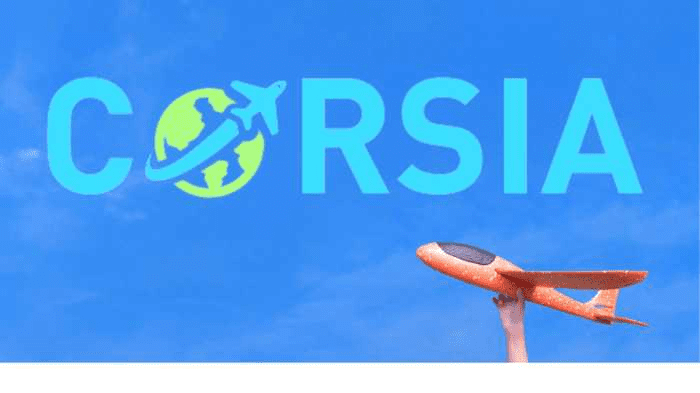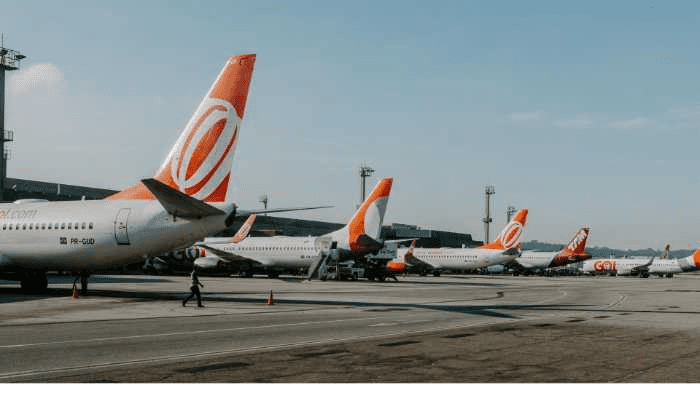
On Oct 6, 2016, the Carbon Offsetting and Reduction Scheme for International Aviation (CORSIA) was signed in Montreal by 191 countries. CORSIA is an emissions reduction scheme for international aviation that came into effect in 2021. The scheme requires airlines to purchase carbon offsets in order to cover their emissions growth above 2020 levels. In this blog post, we will discuss the details of CORSIA and what it means for the aviation industry!
- What is CORSIA and what does it require airlines to do?
- How will CORSIA help reduce emissions from the aviation industry?
- How to calculate CORSIA offset requirements?
- What are CORSIA-eligible fuels?
- What are the CORSIA-eligible emissions units?
- What are the eligibility criteria for CORSIA emissions units?
- What are the benefits of CORSIA for airlines and passengers alike?
- What is the aviation industry’s global share of GHG emissions?
- What challenges does CORSIA face and how might they be overcome?
- Ensuring that CORSIA is additional to other climate measures
- Addressing potential “leakage”
- Managing potential market manipulation
- Requires a large amount of data
- Relies on voluntary carbon offset markets
- Authenticity issues
- Conclusion
- FAQs
What is CORSIA and what does it require airlines to do?

CORSIA is an emission reduction program that was developed by the International Civil Aviation Organization (ICAO) in order to offset greenhouse gas emissions from aviation. The program requires airlines to purchase carbon credits in order to offset their emissions from international flights. The credits can be used to finance projects that reduce emissions in other sectors, such as forestry or renewable energy.
CORSIA is voluntary for its first two phases; the pilot phase (2021-2023) and the first phase (2023-2026). During these early phases, airlines from the states that have volunteered will only be required to offset emissions growth above 2019 levels. In the second phase, which runs from 2027-2035, all aviation emissions from international flights must be offset.
Furthermore, landlocked developing countries, small island developing states, and least developed countries are exempt in the second phase as well, unless they voluntarily participate.
The goal of CORSIA is to keep aviation emissions at 2019 levels, even as the industry continues to grow. In order to achieve this, airlines must purchase credits for any emissions above their average annual growth rate.
For example, if an airline’s emissions grow by 2% per year, it must purchase credits for any emissions above 2%. CORSIA is currently the only global carbon pricing scheme that covers the international aviation industry.
How will CORSIA help reduce emissions from the aviation industry?

The aviation industry has come under increased scrutiny in recent years for its contribution to global emissions. However, the industry is taking steps to reduce its environmental impact, including the introduction of CORSIA.
It is an important part of the aviation industry’s efforts to reduce emissions, as it requires airlines to offset their carbon emissions by investing in projects that help to reduce carbon dioxide levels in the atmosphere.
For example, airlines may invest in forest planting or renewable energy projects to compensate for their international aviation emissions. CORSIA is expected to help reduce 2.5 billion tonnes of CO2 from aviation by 2035, and it is hoped that this will encourage other industries to take similar action on climate change.
How to calculate CORSIA offset requirements?
Plans to mitigate aviation’s impact on climate change include both technical measures to reduce CO2 emissions per flight and a global market-based measure (MBM) to cap and trade emissions. CORSIA is the MBM and it will be operating from 2021 onwards.
CORSIA covers all international flights between participating countries, regardless of whether the flight originates or terminates in a country that has opted-in to the scheme.
Offsets can be generated from any project that reduces greenhouse gas emissions and meets the eligibility criteria set out in the ICAO Guidelines for eligible offset projects under CORSIA.
Emissions reductions from Certified Emission Reductions (CERs), issued under the Kyoto Protocol’s Clean Development Mechanism, can be used for compliance with CORSIA.
To calculate an airline’s offsetting requirements under the CORSIA scheme, you will need to first determine the company’s growth factor. This can be done by taking the percent increase in emissions between any given future year and the baseline.
Once you have determined the growth factor, you will need to multiply it by the operator’s annual emissions. This will give you the total amount of CO2 that needs to be offset each year. There are a variety of ways to offset emissions, but many companies choose to purchase carbon credits or invest in green infrastructure projects.
You can’t improve what you don’t measure.
Free Verified Carbon Calculators.
Erase Your Carbon Footprint in less than 5 Minutes
Personal Carbon Footprint Calculator
Business Carbon Footprint Calculator
What are CORSIA-eligible fuels?
CORSIA-eligible fuels also called the CORSIA lower carbon aviation fuels or CORSIA sustainable aviation fuels are synthetic fuels derived from sustainable sources, such as biomass or feedstock. These sustainable aviation fuels can help to reduce the carbon footprint of the aviation industry by up to 80%.
In order to be eligible for CORSIA, sustainable aviation fuels must meet certain standards set by ICAO. For example, they must have a life cycle carbon footprint that is at least 10% lower than that of traditional jet fuel, and they must be produced using sustainable practices. Sustainable aviation fuels are an important part of the effort to reduce the impact of aviation on climate change.
What are the CORSIA-eligible emissions units?
The emissions units eligible under the CORSIA scheme are:
- Climate Action Reserve (CAR)
- Verified Carbon Standard (VCS)
- Global Carbon Council (GCC)
- Clean Development Mechanism (CDM)
- China GHG Voluntary Emission Reduction Program
- Architecture for REDD+ Transactions (ART)
- American Carbon Registry (ACR)
- The Gold Standard (GS)

What are the eligibility criteria for CORSIA emissions units?
- To be eligible for CORSIA emissions units, clear methodologies and protocols must be in place, and their development process must be ongoing.
- Scope considerations must be taken into account and all activities should be publicly disclosed.
- Offset credit issuance and retirement procedures must be in place.
- Identification and tracking of CORSIA offset credits must be possible in order to retain eligibility.
- The legal nature and transferability of CORSIA emissions credits must be well-defined.
- There are strict provisions to avoid any double counting of carbon offset credits, as well as rules governing the timing of unit issuance and claiming.
- CORSIA includes a system of safeguards to ensure that its environmental objectives are met, in line with the Paris Agreement on climate change.
These are the seven main criteria that must be met in order to be eligible for CORSIA offset credits. Meeting these criteria is essential in order to participate in the CORSIA scheme.
Go Carbon Neutral – in only 3 Minutes!
What are the benefits of CORSIA for airlines and passengers alike?

CORSIA is a carbon offsetting agreement to reduce greenhouse gas emissions from international aviation. The goal of CORSIA is to keep the growth of aviation emissions at 2019 levels or below.
CORSIA is a voluntary agreement, and airlines can choose to participate or opt-out depending on the agreed terms and conditions. However, there are benefits for both airlines and passengers when airlines participate in CORSIA.
For airlines, CORSIA provides a financial incentive to reduce emissions. Airlines can earn carbon credits by offsetting their emissions through projects such as planting trees or investing in renewable energy. These carbon credits can be used to offset emissions in the future, or sold on the open market.
In addition, CORSIA provides a regulatory framework for reducing aviation emissions. This framework will help airlines to develop and implement more efficient operating procedures and technologies.
For passengers, CORSIA offers the assurance that their flights are not contributing to climate change. When choosing an airline, passengers can look for airlines that are participating in CORSIA and offsetting their emissions. This will help to encourage more airlines to participate in CORSIA and make it easier for passengers to make low-carbon travel.
What is the aviation industry’s global share of GHG emissions?
Greenhouse gases emitted from aircraft can have a significant impact on the environment. The three main types of aircraft emissions are carbon dioxide (CO2), water vapor, and nitrous oxide. CO2 is the most prevalent greenhouse gas, accounting for about 84 percent of aircraft emissions.
Water vapor is the second most common emission, accounting for about 12 percent. Nitrous oxide, which is a powerful greenhouse gas, makes up the remaining 4 percent. Aircraft emissions are considered to be a major contributor to climate change.
In fact, they are responsible for about 1.9% percent of all man-made greenhouse gas emissions and 2.5% of all CO2 emissions. As the demand for air travel continues to grow, it is important to find ways to reduce these emissions. One way to do this is to use more fuel-efficient aircraft. Another is to offset emissions by investing in projects that help reduce greenhouse gases in the atmosphere.
What challenges does CORSIA face and how might they be overcome?
CORSIA is a key measure under the CO2 standard of the International Civil Aviation Organization (ICAO). CORSIA faces a number of challenges in its design and implementation, including:
Ensuring that CORSIA is additional to other climate measures
CORSIA offsets must represent emissions reductions that are additional to other mitigation actions. This may be difficult to ensure, given that the aviation industry is already taking action to improve fuel efficiency and reduce emissions.
Addressing potential “leakage”
CORSIA offsets must be permanent and not lead to an increase in emissions elsewhere (“leakage”). This challenge is particularly relevant for forest offsets, where there is a risk that trees planted to offset aviation emissions may be destroyed later for other purposes, leading to an overall increase in emissions.
Managing potential market manipulation
If CORSIA offsets are traded on carbon markets, there is a risk of market manipulation and speculation. This could lead to higher prices for offsets, making it more difficult for airlines to meet their obligations.
Requires a large amount of data
One challenge is that CORSIA requires a large amount of data to be collected and processed in order to be effective. This data includes flight plans, fuel consumption, and emissions data. Collecting and processing this data can be time-consuming and expensive.
Relies on voluntary carbon offset markets
Another challenge is that CORSIA relies on a voluntary carbon offset market to function. While there are many voluntary carbon offset markets in operation, they are not well-developed or regulated. This can make it difficult for airlines to find offsetting projects that meet their needs and requirements.
Authenticity issues
Finally, CORSIA faces the challenge of ensuring that offset credits are genuine and represent real emissions reductions. This is essential to ensure that CORSIA achieves its goals of a sustainable tomorrow.
Despite these challenges, CORSIA has the potential to be an important tool for helping the aviation industry reduce its environmental impact. Overcoming these challenges will require continued effort and cooperation from all stakeholders involved.
Conclusion
In conclusion, CORSIA is a key measure under the CO₂ standard of the International Civil Aviation Organization (ICAO). It has the potential to be an important tool for helping the aviation industry reduce its environmental impact but faces a number of challenges. Despite the challenges, CORSIA has the potential to be an important tool for helping the aviation industry improve its environmental integrity. Overcoming these challenges will require continued input and determination but the future looks bright for CORSIA.
FAQs

What is carbon-neutral growth?
Carbon-neutral growth is a concept that refers to the achievement of net-zero carbon emissions. This can be accomplished through a variety of means, including the development of renewable energy sources, the implementation of energy efficiency measures, and the offsetting of carbon emissions through carbon Credits. Carbon-neutral growth is essential for combating the climate crisis and ensuring a sustainable future for our planet.
Why is CORSIA only for international flights?
Because international aviation accounts for 2% of global emissions, its emissions are growing at a much faster rate than other sectors. In order to achieve the goals of the Paris Agreement and the United Nations Framework Convention, it is essential to reduce emissions from international flights. CORSIA is one way to do this as it is working its way out toward sustainable development.
What is carbon sequestration?
Carbon sequestration is the process of capturing and storing carbon dioxide. This can be done through natural processes, like planting trees, or through human-made processes, like using carbon capture and storage technology. Carbon sequestration can help to reduce atmospheric carbon dioxide levels and mitigate the climate crisis.
What is an individual’s emissions reduction activity?
An individual’s emissions reduction activity can be anything that reduces their emissions output. For example, driving less, recycling more, or using energy-efficient appliances. Every little bit helps when it comes to reducing emissions and protecting the environment.
What are environmental safeguards?
Environmental safeguards are put in place in order to protect the environment from the negative effects of human activity. There are a variety of safeguards, ranging from regulations on emissions to requirements for the use of renewable resources. Environmental safeguards are important in order to protect the world’s air, water, and land from pollution and degradation.
- What is CORSIA and what does it require airlines to do?
- How will CORSIA help reduce emissions from the aviation industry?
- How to calculate CORSIA offset requirements?
- What are CORSIA-eligible fuels?
- What are the CORSIA-eligible emissions units?
- What are the eligibility criteria for CORSIA emissions units?
- What are the benefits of CORSIA for airlines and passengers alike?
- What is the aviation industry’s global share of GHG emissions?
- What challenges does CORSIA face and how might they be overcome?
- Ensuring that CORSIA is additional to other climate measures
- Addressing potential “leakage”
- Managing potential market manipulation
- Requires a large amount of data
- Relies on voluntary carbon offset markets
- Authenticity issues
- Conclusion
- FAQs

Dean Emerick is a curator on sustainability issues with ESG The Report, an online resource for SMEs and Investment professionals focusing on ESG principles. Their primary goal is to help middle-market companies automate Impact Reporting with ESG Software. Leveraging the power of AI, machine learning, and AWS to transition to a sustainable business model. Serving clients in the United States, Canada, UK, Europe, and the global community. If you want to get started, don’t forget to Get the Checklist! ✅
